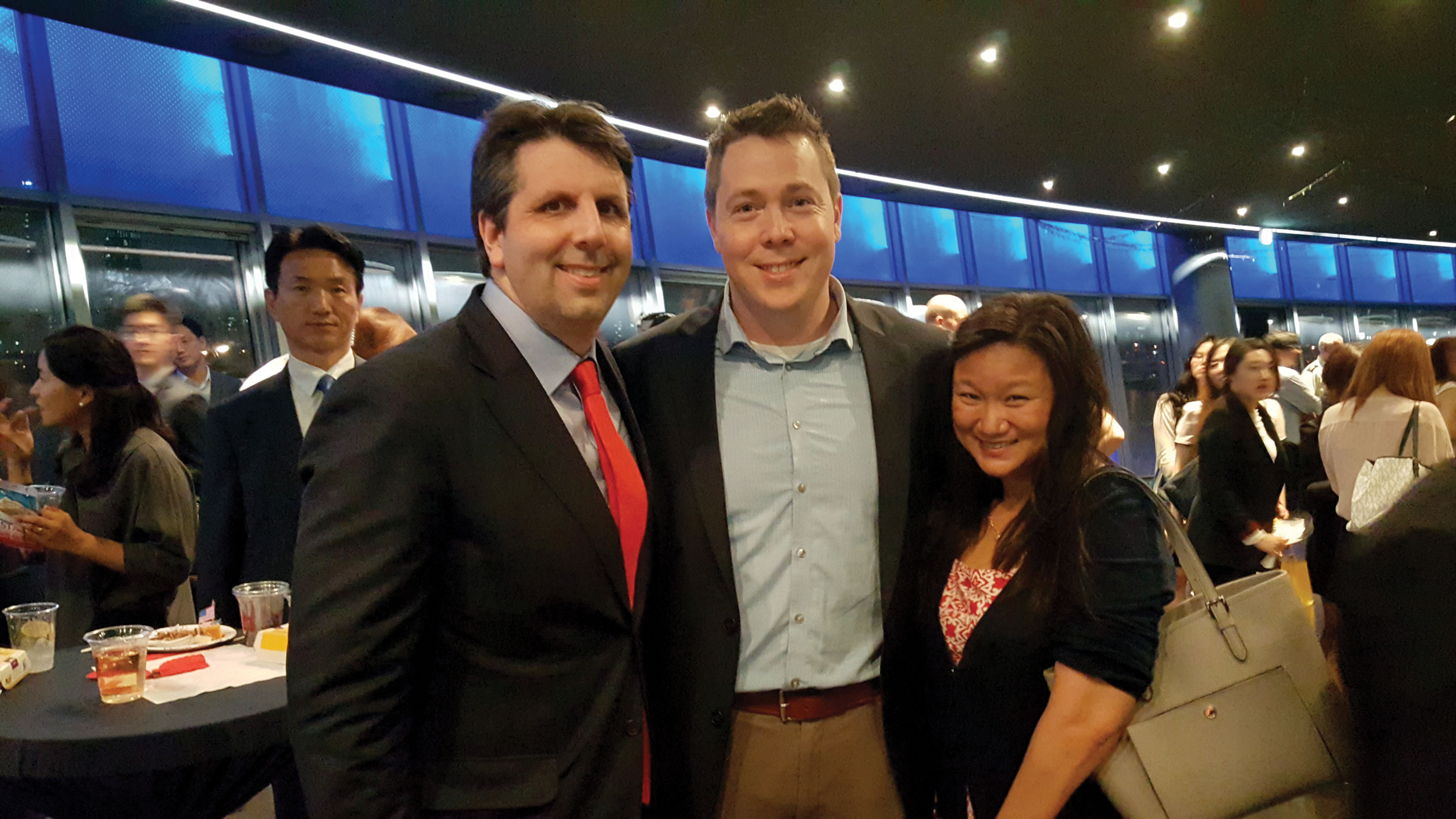
This column is the first in a series of articles profiling the work of defense science and technology personnel participating in the Engineer and Scientist Exchange Program, managed by the deputy assistant secretary of the Army for defense exports and cooperation. The program’s mission is to increase international collaboration in military research, development and acquisition, as well as to provide career-broadening work assignments for U.S. military and government defense personnel in foreign defense establishments.
By Ms. Gabriella Krohmal and Mr. Adam Genest
U.S. and South Korean civilian defense scientists are working together to create energy from thin air.
Dr. Mark Griep, a U.S. Army Research Laboratory (ARL) biomedical engineer who recently participated in the Engineer and Scientist Exchange Program (ESEP) in Daejeon, South Korea, invented a material that could do just that.
“Korea is making a major thrust in materials development to improve power and energy,” Griep explained. “If lithium-air batteries can convert oxygen into energy, batteries will be much lighter to carry but can theoretically reach the same energy density as gasoline.”
From October 2015 to September 2016, Griep worked within South Korea’s Agency for Defense Development (ADD), where he translated his expertise with nanomaterials into a groundbreaking new material for lithium-air batteries. These energy technologies could revolutionize portable Soldier energy—a critical readiness objective for the U.S. Army.
Beyond giving U.S. Army scientists access to allied research and development efforts, ESEP enables the U.S. to leverage foreign partners’ testing and acquisition systems. “My work in the U.S. had primarily focused on fundamental research,” Griep said, “while Korea is quicker to field their technology.”
A prototype resulting from Griep’s research now is being scaled and fielded to fit on backpacks at ADD. Its ultimate success could result in better equipment to improve the readiness of U.S. and South Korean forces on the peninsula. “Korea has a different level of urgency, given their proximity to the threat,” said Griep.
ESEP provides Army scientists a pathway to broaden their horizons and expand the international reach of their work. “I first heard about the Engineer and Scientist Exchange Program when I arrived at ARL as a Ph.D. student,” Griep said. “I’d done a year in Taiwan as a Fulbright [scholar] and was always interested in international [work]. My field of nanomaterials is an important research area in Southeast Asia right now, and the ESEP provided a great opportunity for me to learn more about Korea’s pioneering work in nanomaterials.”
Outside the laboratory, Griep formed invaluable bonds with his South Korean colleagues. Through daily hikes with co-workers, pitching for ADD’s softball team and trying new and exotic foods—including live octopus—Griep made lifelong friends and garnered a strong appreciation for Korean culture.
Since his return to the U.S., he has been working on publishing several articles and has connected his former South Korean colleagues with U.S. scientists working at ARL’s Sensors and Electron Devices Directorate. In August 2017, Dr. Yusong Choi from ADD arrived at ARL as an ESEP participant, ensuring that the mutual benefits derived from U.S.-Korean cooperation in energy technologies will continue well into the future.
This article will be published in the January – March 2018 issue of Army AL&T magazine.
Subscribe to Army AL&T News, the premier online news source for the Acquisition, Logistics, and Technology (AL&T) Workforce.







